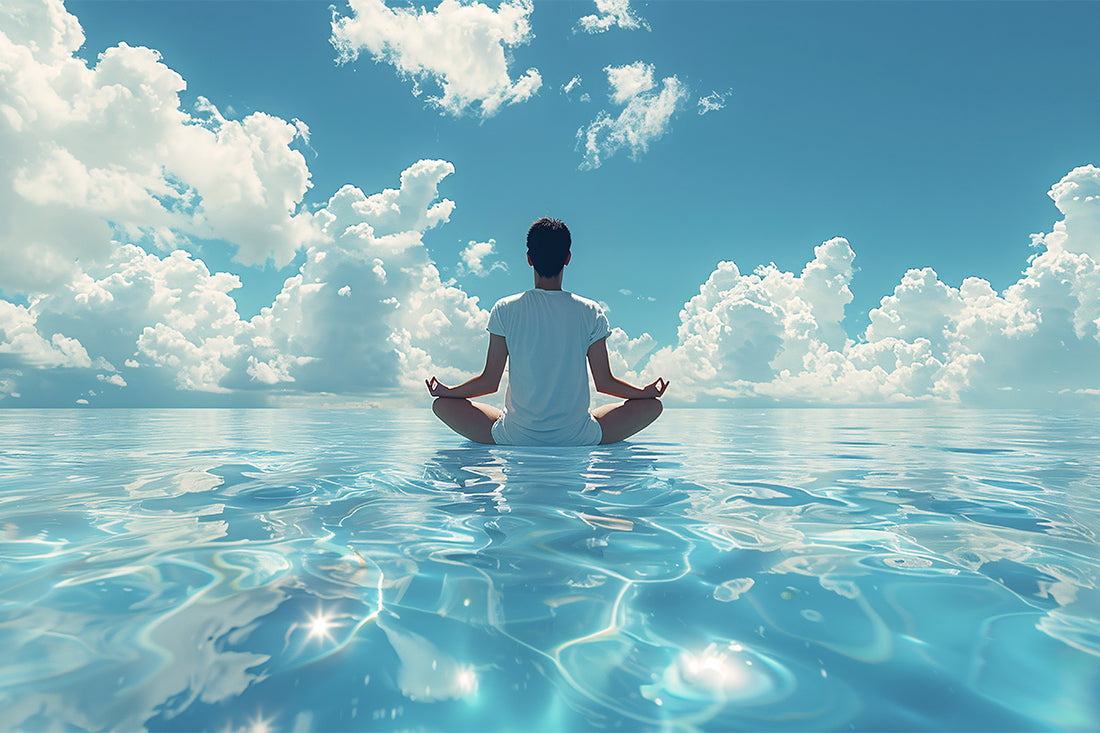Ever tried doing yoga in water? Aqua yoga is a calm yet powerful way to stretch, move, and reconnect with your body. It combines traditional yoga poses with the soothing nature of water. Whether you're dealing with joint discomforts, stiffness, or just want a fresh way to stay active, aqua yoga could be the answer. It’s gentle on the body while still offering a deep and rewarding practice.
In this guide, we’ll explore what aqua yoga is, how it works, who it's great for, and how you can start your own practice using simple props and poses.
What Is Aqua Yoga?
Aqua yoga (also called water yoga) is the practice of doing yoga poses in a warm pool. The water acts like a support system, helping your body stay light and balanced. It feels less intense than doing yoga on land, but don’t be fooled—this gentle method still helps build strength and flexibility.
For people with mobility issues or discomforts in the joints or back, water yoga is a comfortable option. The water helps ease pressure while still allowing for a full-body movement experience.
Why Try Aqua Yoga?
Here are some ways aqua yoga can help support your wellness routine:
- Helps with Mobility and Flexibility
Being in the water helps the body move with less resistance. It allows for a greater range of motion, especially in the hips, knees, and shoulders. For people who feel stiff or are recovering from physical discomforts, this extra movement space can feel freeing.
- Builds Strength Gently
Even though you feel lighter in water, your body still works to stay balanced. This helps build core strength, balance, and muscle tone in a soft and supportive way. Aqua yoga offers a low-impact way to work on these areas without putting extra stress on the joints.
- Eases Pressure on the Body
Water’s natural support can help ease common stiffness. It’s especially helpful for people with age-related discomforts, pregnancy-related body changes.
The gentle flow of water combined with breathing exercises and calm movements makes aqua yoga not just a physical workout, but a mental reset as well. It encourages mindfulness and helps you stay present in your practice.
Who Can Do Aqua Yoga?
Almost anyone! It’s ideal for:
- Older adults
- Beginners or those new to yoga
- People with limited mobility
- Pregnant individuals
- Athletes looking for a recovery routine
- Anyone wanting a low-impact way to move and stretch
As always, it’s best to check with your healthcare provider if you have specific health concerns before starting a new exercise.
Aqua Yoga Props You Might Need
You don’t need fancy gear to enjoy water yoga, but a few props can help you stay safe and balanced in the pool:
- Pool noodles – For support during seated or floating poses
- Aqua dumbbells – Lightweight tools that help with balance and light resistance
- Kickboards – Great for supporting the back or helping you float
- Aqua yoga mat – A floating mat that lets you practice poses more like a traditional mat routine
These props make it easier to move with confidence, especially if you’re new to the practice.
Common Aqua Yoga Poses to Try
Many land-based yoga poses can be adapted to water. Here are some you can try:
- Water Warrior Pose (Virabhadrasana)
Stand in chest-high water with feet wide apart, arms stretched. This pose helps with balance and strength in the legs while being supported by water.
- Floating Tree Pose (Vrksasana)
With the help of the pool wall or a noodle, try balancing on one leg. The water helps stabilize the pose while you work on focus and balance.
- Aqua Chair Pose (Utkatasana)
Using the water’s resistance, squat slightly with arms raised. It engages the thighs and glutes without straining the knees.
- Water Cat-Cow Stretch (Marjaryasana/Bitilasana)
Lean against the pool wall and gently arch and round your back. It’s a simple way to wake up the spine and feel more mobile.
- Leg Swings and Arm Circles
Gentle swinging movements in water help loosen up the joints and get the body moving comfortably.
Each pose can be held longer or repeated for a flow-style routine. The key is to move slowly and mindfully.
How to Start Your Aqua Yoga Practice
Starting aqua yoga is simple. Here's a quick checklist to help you:
- Find a warm pool. A temperature around 86–90°F is most comfortable.
- Wear a swimsuit that allows easy movement.
- Bring your props. A noodle or floatation belt is enough for a beginner.
- Begin with simple poses. Focus on posture and breathing.
- Practice regularly. Even 2–3 times a week can help you feel more open and relaxed.
You can join an aqua yoga class if you prefer guidance, or start a solo routine with a few poses and some calming music.
Conclusion
Aqua yoga is more than just a trend—it’s a gentle and smart way to support your body. It helps ease tightness, supports mobility, and allows you to stretch and move in a way that feels good. Whether you're looking to feel lighter on your feet, stretch more comfortably, or simply find a new way to stay active, water yoga is worth a try.
So the next time you're near a pool, give aqua yoga a chance. Your body (and mind) just might thank you.






